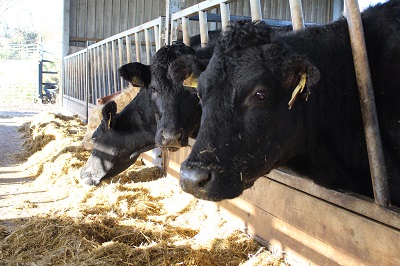Practical Steps To Reducing Lameness In Finishing Cattle
5 June 2020As with most things in life, when it comes to lameness, prevention is always better than cure. Lameness is recognised as a major issue in the dairy industry, with dairy producers spending a lot of time and money on treating and preventing lameness in their herds. Although not such an acute issue in most beef herds, there is still potential to make changes to reduce lameness, particularly in finishing systems.
Many finishing cattle are now housed year-round, this allows producers to have more control over the environment, ration and welfare of their cattle. It does, however, create the problem of cattle standing on concrete and bedding throughout their whole finishing period.
Below is a list of some practical tips to reduce lameness in your system.
Biosecurity
A vital part to eliminating lameness on finishing units, avoiding buying other people’s problems is a good start. Issues such as Digital Dermatitis are very easy to bring in and much harder to eradicate. Having an open dialogue with repeat suppliers is hugely valuable. A strict quarantine and treatment plan are also important in preventing infectious causes of lameness before they get a start. Make sure you discuss biosecurity and lameness with your vet.
Cleanliness
Cattle with clean dry feet are much less likely to develop foot problems, particularly those caused by bacterial issues. Pens should be regularly cleaned out and fresh bedding applied. When scraped passages are part of the system, these should be cleaned several times per week, to avoid build-up of slurry, this will have the added benefit of producing a significant saving on straw.
Bedding Choice
The vast majority of cattle are finished on straw yards. Straw works as a good clean bedding material and is readily available in the areas where cattle are traditionally finished. Cattle standing solely on straw yards may be at a higher risk of lameness than those that can get off the straw (onto a scraped feed passage). This is partly due to dung “balling up” between the animals’ claws and causing damage and irritation. The other reason is that a straw bed tends to heat, particularly in the summer as bacteria work to break the bedding down. This heat irritates feet and also increases the risk of bacterial infection. Woodfines and sawdust could be a better option as they don’t heat as much and are much finer materials, so feet tend to be cleaner. The added benefit is a well-managed bed of woodfines or sawdust will keep cattle cleaner all over and result in less requirement for clipping.
Troughs and Hoppers
Areas around troughs and hoppers are potential hotspots for causing lameness. In the shed, keep these areas well bedded or scraped out regularly. If feeding cattle at hoppers or troughs in fields, avoid excessive poaching around these areas, if things start to get mucky, move the feeder. Having to paddle through mud to get to feeding will also impact on animal performance, as intakes will be restricted. Remember to site feeders at least 5 metres away from any watercourses, to avoid a cross compliance breach.
Concrete Floors
Slippy concrete floors are a major cause of lameness in cattle. Consider getting floors grooved or scarified to reduce incidence of non-infectious lameness caused by trauma. Slippy floors cause cattle to lose confidence and are likely to have a detrimental impact on feed intake. Slopes are also a major concern for lameness, if cattle must negotiate steep slopes, in the shed or handling pens, they are at significant risk of developing foot problems. Look at options to remove slopes. If there is no way of removing the slope, consider fitting some rubber matting to reduce the pressure on feet.
Uneven Surfaces
Finishing cattle rations are high in energy and promote rapid hoof growth, as such, finishing cattle have softer feet than other groups of cattle. Take care when moving cattle, try to avoid walking these cattle on stony, uneven surfaces. Perhaps it is worth giving a concrete yard a quick sweep before walking cattle across it. Small stones are the start of many lameness issues.
Applying Lime
Adding lime to key area in the pen is a good option to reduce lameness risk. Areas around feeders and particularly water troughs are wetter than the rest of the pen and also have a higher bacterial load. Consider adding some powdered lime to these areas. This will dry up the bedding and kill some of the bacteria. A knock-on benefit is that the lime will increase the pH of the FYM and be beneficial to soil when it is spread later in the year.
Foot Baths
Dairy farmers make regular use of footbaths and they are a very effective broad treatment for herd lameness issues. The practicalities of routine foot bathing in finishing units are more complex. If you get everything else right in the system, there should be very little need for routine foot bathing in finishing cattle.
As we strive for efficient production in the face of economic and environmental challenges, avoiding lameness in finishing cattle is critical to the success of your enterprise. Getting the basics right should be enough to avoid any lameness breakdowns in your herd. If a lameness issue does materialise, don’t delay in seeking advice from your vet or suitably qualified foot trimmer.
Robert Ramsay, robert.ramsay@sac.co.uk
This article is part of a series, you might also be interested in Nutritional Causes: Focus On Laminitis and Identifying and Treating Lameness In Cattle
Sign up to the FAS newsletter
Receive updates on news, events and publications from Scotland’s Farm Advisory Service

